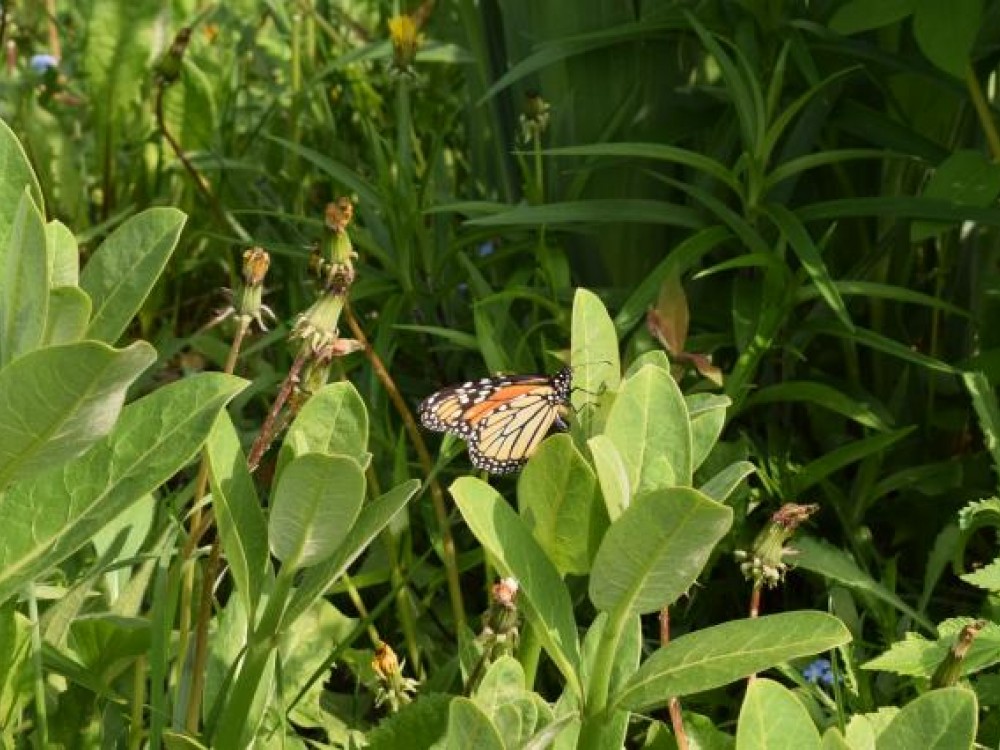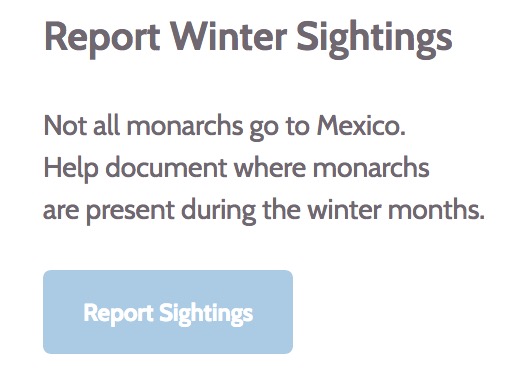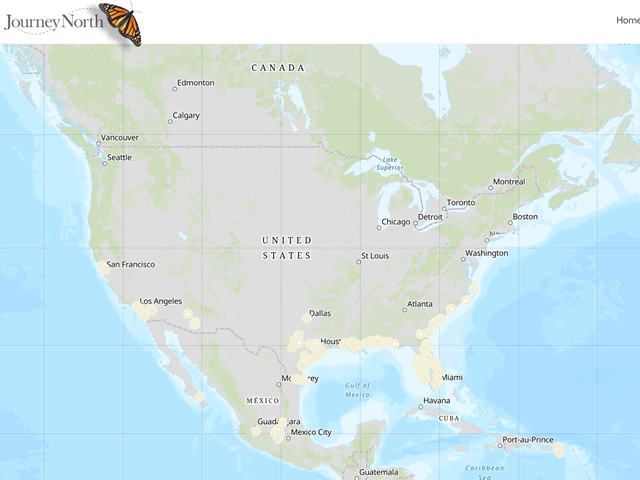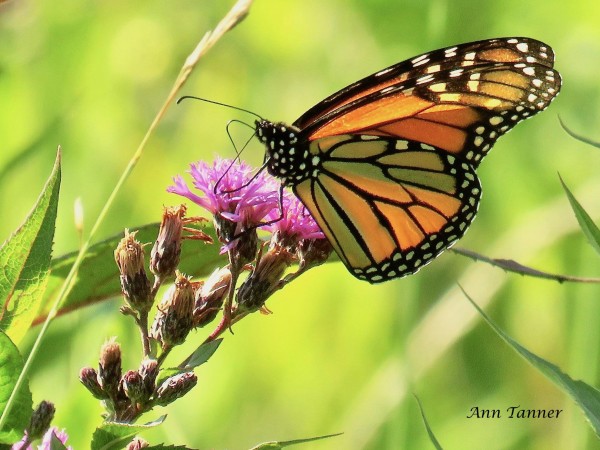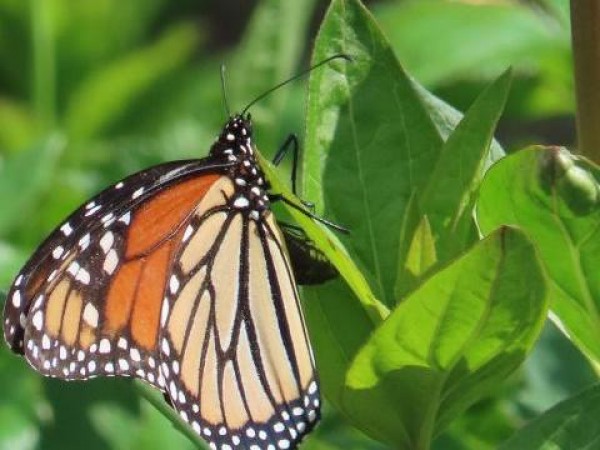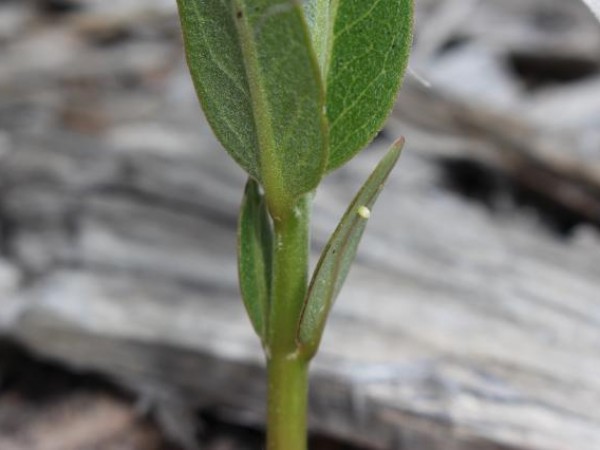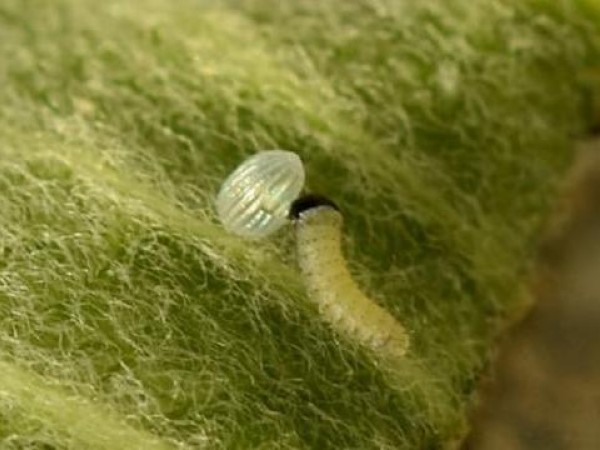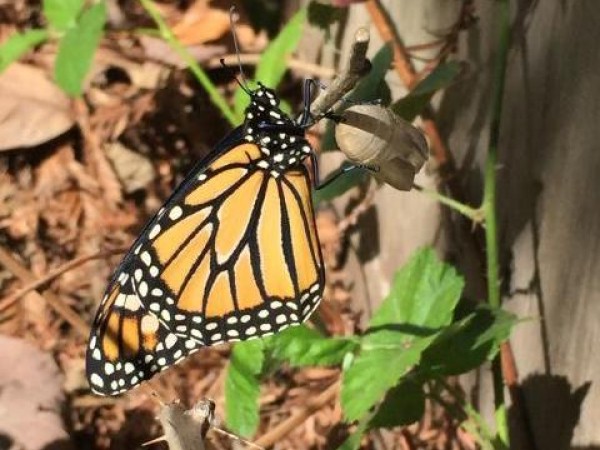Spring News Updates Conclude. Reporting Continues.
Another Great Spring Season
Despite the challenges of posed by the pandemic, Journey North citizen scientists have submitted 6,625 monarch and milkweed observations. Thank you for doing all that you could amid uncertainties and while maintaining your health and safety. We have been honored to share your comments and photos through our monarch news updates. In turn, we hope these news updates have sparked joy and wonder -- and know that your data contributes to efforts to protect monarchs throughout North America. Thank you for following along and sharing your observations.
Summer Fun
We have listed a number of ways to stay connected during the summer.
Help Us To Celebrate Pollinators
Nectar is important for migration, but monarchs need nectar during the breeding season, too. Help us map pollinator patches this summer: Let’s Connect For Pollinators Pay attention to flowering dates so you can provide nectar for monarchs from the time they arrive in the spring until they migrate south in the fall. Monarchs need milkweed, but they need nectar plants too.
- Read more about why pollinators are important: Pivotal Pollinators: Small in Size, Large in Impact
Keep reporting
As first sightings dwindle, continue to report your observations under these five reporting categories: (1) Monarch Adult Sighted, (2) Monarch Egg Sighted, (3) Monarch Larva Sighted, (4) Monarch Other Observations, and (5) Milkweed Sighted
Eastern Population of Monarchs
Migration Complete
Look how far the monarchs have come! From 10 acres of winter habitat in Mexico, they have now expanded across more than 1 billion acres of breeding habitat. The most northern sighting was reported by Jodi in Peguis, MB located about 180 kilometers (111 miles) north of Winnepeg. Monarchs were finally sighted in the provinces of Quebec, New Brunswick, and Nova Scotia. There are still no reports from Prince Edward Island. Last year, Zoe, from Queens, PE, reported her first monarch of the spring on June 16th. Perhaps monarchs will arrive to PE soon.
From Hebbville, NS: Connie reported, "First female monarch of 2020 arrived this afternoon - fluttered from plant to plant depositing eggs." (06/09/2020)
From St-Étienne-des-Grès, QC: Don Davis submitted for another observer this report, "On June 8, "Loup2" reported a monarch in Trois-Rivières, Quebec. He wrote: "Quelques plant d'asclépiade sur mon terrain. J'ai cherché des œufs mais sans succès." English translation:"Some milkweed plants on my property. I looked for eggs but without success." (06/08/2020)
From Ste-Catherine-de-la-Jacques-Cartier, QC: Don Davis submitted for this report for Kevin, "one monarch sighted...Very fresh looking individual - possibly a female." (06/09/2020)
From Northampton, NB: Don Davis submitted for this report for Nathan, "I spotted a Monarch butterfly at lunch today here in Grafton. I showed my kids and my oldest son noticed another one in the same part of our yard...We don't have milkweed in our yard, they were just passing through and didn't stay long. Grafton and Woodstock is separated by the St. John River. We didn't see them land on anything. I've taught my kids to take note of wildlife especially if it's around our yard so having two Monarchs stood out immediately. I told them all to keep their distance so we let them be and went to another part of our yard. I leave a section of our 1-acre yard unmowed...They didn't appear worn or old..." (06/09/2020)
Peak Breeding Season
Monarchs live for only 2-6 weeks during the breeding season. All energy is focused on reproduction. Females search for milkweed to lay the 400-600+ eggs they can produce in a lifetime. Males patrol milkweed in search of females for mating. Monarchs can produce a new generation in about 1 month, resulting in as many as four generations during the typical breeding season. The population grows with each new generation so monarchs become increasingly noticeable as the summer wears on.
From Missoula, MT: Maggie noted, "After a rainy cool weekend, we found 10 eggs scattered across a large patch of showy milkweed at the Fort Missoula Native Plant Garden. All eggs were laid singly on small plants even though some plants are now over 2 feet tall. So exciting!" (06/09/2020)
From Winnipeg, MB: Lindsay reported, "I counted 14 freshly laid eggs on my milkweed! All on the flower buds. I've noticed the first eggs of the season are usually on or just under the milkweed flower buds." (06/09/2020)
From Milwaukee, WI: Jon commented, "Just hatched." (06/07/2020)
Got Milkweed
Check out Journey North milkweed maps to explore first emergence and other milkweed observations.
Western Monarch Population Migration News
Gail Morris, Coordinator of the Southwest Monarch Study, provides an update on the Western Monarch Population in her weekly report. This week Gail writes in her fourteenth report:
Monarchs Across the West!
Monarchs reached across all the Western states this week and entered Idaho for the first time! Citizen Science reporters shared detailed encounters. You can join them in their yards and in the field. Dr. David James explains his summer monarch breeding forecast. Think about where YOU might see monarchs in the West this summer! Read more

